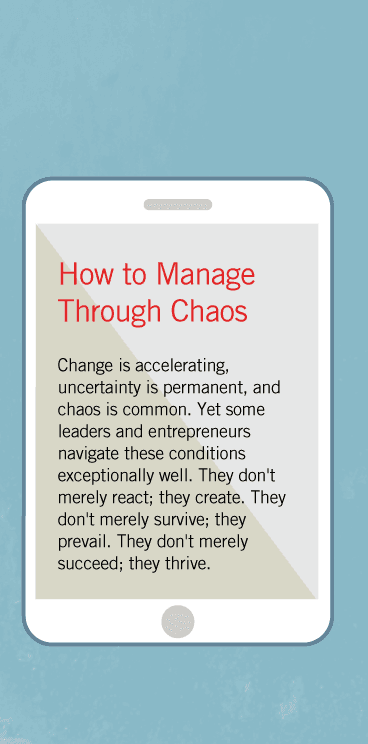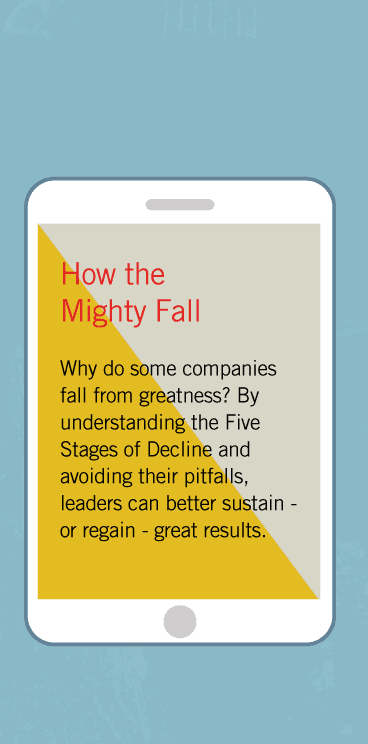BHAG – Big Hairy Audacious Goal
All companies have goals. But there is a difference between merely having a goal and becoming committed to a huge, daunting challenge– like a big mountain to climb. Think of the moon mission in the 1960s. President Kennedy and his advisors could have gone off into a conference room and drafted something like "Let's beef up our space program," or some other such vacuous statement. The most optimistic scientific assessment of the moon mission's chances for success in 1961 was fifty-fifty and most experts were, in fact, more pessimistic. Yet, nonetheless, Congress agreed (to the tune of an immediate $549 million and billions more in the following five years) with Kennedy's proclamation on May 25, 1961, "that this Nation should commit itself to achieving the goal, before this decade is out, of landing a man on the moon and returning him safely to earth." Given the odds, such a bold commitment was, at the time, outrageous. But that's part of what made it such a powerful mechanism for getting the United States, still groggy from the 1950s and the Eisenhower era, moving vigorously forward.
A Clear—and Compelling–Goal
Like the moon mission, a true BHAG is clear and compelling and serves as a unifying focal point of effort– often creating immense team spirit. It has a clear finish line, so the organization can know when it has achieved the goal; people like to shoot for finish lines.
A BHAG engages people– it reaches out and grabs them in the gut. It is tangible, energizing, highly focused. People "get it" right away; it takes little or no explanation.
The moon mission didn't need a committee to spend endless hours wordsmithing the goal into a verbose, meaningless, impossible-to-remember "mission statement." No, the goal itself– the mountain to climb– was so easy to grasp, so compelling in its own right, that it could be said one hundred different ways, yet easily understood by everyone. When an expedition sets out to climb Mount Everest, it doesn't need a three-page, convoluted "mission statement" to explain what Mount Everest is. Think about your own organization. Do you have verbose statements floating around, yet no stimulating bold goals with the compelling clarity of the moon mission, climbing Mount Everest, or the corporate BHAGs in this chapter? Most corporate statements we've seen do little to provoke forward movement (although some do help to preserve the core). To stimulate progress, however, we encourage you to think beyond the traditional corporate statement and consider the powerful mechanism of a BHAG.
Reflecting on the challenges facing a company like General Electric, CEO Jack Welch stated that the first step– before all other steps– is for the company to "define its destiny in broad but clear terms. You need an overarching message, something big, but simple and understandable." Like what? GE came up with the following: "To become #1 or #2 in every market we serve and revolutionize this company to have the speed and agility of a small enterprise." Employees throughout GE fully understood– and remembered– the BHAG. Now compare the compelling clarity of GE's BHAG with the difficult-to-understand, hard-to-remember "vision statement" articulated by Westinghouse in 1989:
General Electric: |
Westinghouse: |
Become #1 or #2 in every market we serve and revolutionize this company to have the speed and agility of a small enterprise. |
Total Quality |
The point here is not that GE had the "right" goal and Westinghouse had the "wrong" goal. The point is that GE's goal was clear, compelling, and more likely to stimulate progress, like the moon mission. Whether a company has the right BHAG or whether the BHAG gets people going in the right direction are not irrelevant questions, but they miss the essential point. Indeed, the essential point of a BHAG is better captured in such questions as: "Does it stimulate forward progress? Does it create momentum? Does it get people going? Does it get people's juices flowing? Do they find it stimulating, exciting, adventurous? Are they willing to throw their creative talents and human energies into it?"






